High-Intensity Interval Training (HIIT) isn’t just a fitness trend; it’s a science-backed symphony of sweat, where every drop tells a tale of triumph over the tyranny of the treadmill’s monotony. Welcome, dear reader, to the pulsating world of HIIT, where the only thing that burns brighter than your quads is your curiosity about the method to this muscle-building madness. In this blog post, we’ll unravel the enigmatic tapestry of anaerobic alchemy that transforms mere mortals into paragons of endurance and power.
Now, before you dismiss this as yet another ode to exercise extremism, let me assure you that we’re about to embark on an intellectual adventure—a veritable HIIT narrative that’s as engaging as it is informative. You see, HIIT isn’t simply about gasping for air like a fish out of water while a timer mercilessly counts down. It’s about understanding the why’s and how’s, the intricate dance between energy systems, and the physiological party tricks your body pulls off to adapt to these blistering bouts of activity.
But why should you, the discerning fitness aficionado, care about the science behind High-Intensity Interval Training? Well, because knowledge is power, and power is what propels you past plateaus and peaks alike. And let’s face it, there’s something inherently amusing about the concept of tricking your body into becoming fitter by playing a game of red light, green light with your own muscles.
As we delve deeper, we’ll explore the cellular shindigs that occur when you alternate between pushing your body to its limits and granting it merciful reprieves. We’ll dissect the role of mitochondria—those tiny powerhouses that could give most superheroes a run for their money—and how they respond to the ebb and flow of a HIIT session. Plus, we’ll look at how HIIT can be a time-efficient alternative to traditional endurance training, perfect for those who have ever muttered, “I don’t have time to work out,” while simultaneously binge-watching a TV series.
So lace up your sneakers, and let’s sprint through the science of High-Intensity Interval Training together. By the end of this post, you’ll not only be well-versed in the art of HIIT, but you’ll also be the life of the party—or at least the gym—armed with a barrage of fun facts and a newfound appreciation for the cunning complexity of your own body. Ready, set, HIIT it!
Overview
High Intensity Interval Training, or HIIT, has become a popular fitness trend in recent years. It involves short bursts of intense exercise followed by brief periods of rest or active recovery. This type of training can be done with various types of exercises, including cardio and strength training.
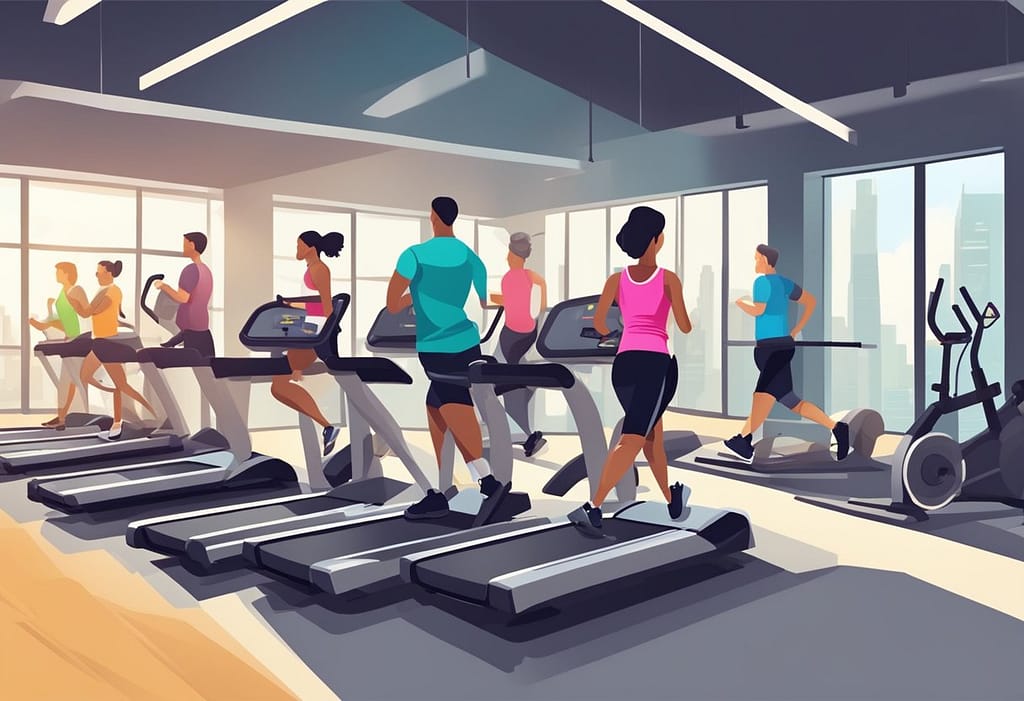
The health benefits of HIIT are numerous. Studies have shown that it can improve cardiovascular health, increase muscle mass, and decrease body fat. HIIT has also been found to be more efficient than traditional steady-state cardio, as it can provide similar or greater benefits in a shorter amount of time. Additionally, HIIT can be adapted to fit various fitness levels and goals, making it a versatile option for individuals looking to improve their overall health and fitness.
Understanding High-Intensity Interval Training
High-Intensity Interval Training (HIIT) is a popular form of exercise that involves short bursts of intense activity followed by periods of rest or low-intensity activity. This type of training has gained popularity in recent years due to its effectiveness in improving aerobic capacity, VO2 max, and overall fitness levels. In this section, we will explore the principles of HIIT, compare it to other forms of interval training, and discuss the role of heart rate and oxygen consumption in HIIT.
Principles of High-Intensity Interval Training
The principles of HIIT are based on the concept of maximizing the benefits of exercise in a shorter amount of time. HIIT involves performing short bursts of high-intensity exercise, typically lasting between 20 seconds to 2 minutes, followed by periods of rest or low-intensity exercise. This cycle is repeated for a set number of rounds or time, usually between 4 to 8 rounds or 20 to 30 minutes.
The high-intensity intervals are designed to push the body to its limits, increasing heart rate and oxygen consumption, while the periods of rest or low-intensity exercise allow the body to recover before the next interval. This type of training has been shown to improve aerobic capacity, VO2 max, and overall fitness levels.
HIIT vs. SIT vs. MICT
HIIT is often compared to other forms of interval training, such as Sprint Interval Training (SIT) and Moderate-Intensity Continuous Training (MICT). SIT involves short bursts of all-out sprinting, followed by periods of rest or low-intensity exercise. MICT, on the other hand, involves exercising at a moderate intensity for an extended period, typically 30 minutes to an hour.
While all three forms of interval training have been shown to improve aerobic capacity and overall fitness levels, HIIT has been found to be the most effective in a shorter amount of time. HIIT has also been shown to improve insulin sensitivity, which can help with weight loss and reducing the risk of type 2 diabetes.
The Role of Heart Rate and Oxygen Consumption
Heart rate and oxygen consumption are important factors in HIIT. During high-intensity intervals, heart rate increases, and oxygen consumption is elevated, leading to an oxygen debt. This oxygen debt is repaid during periods of rest or low-intensity exercise, allowing the body to recover before the next interval.
Monitoring heart rate during HIIT can help ensure that the intensity is appropriate for the individual. It is recommended to aim for 80-95% of maximum heart rate during high-intensity intervals. Oxygen consumption can also be monitored using a VO2 max test, which can help determine an individual’s fitness level and guide the intensity of HIIT workouts.
In conclusion, HIIT is an effective form of exercise that can improve aerobic capacity, VO2 max, and overall fitness levels in a shorter amount of time. By understanding the principles of HIIT, comparing it to other forms of interval training, and monitoring heart rate and oxygen consumption, individuals can maximize the benefits of this type of training.
High-Intensity Interval Training Workouts and Exercises
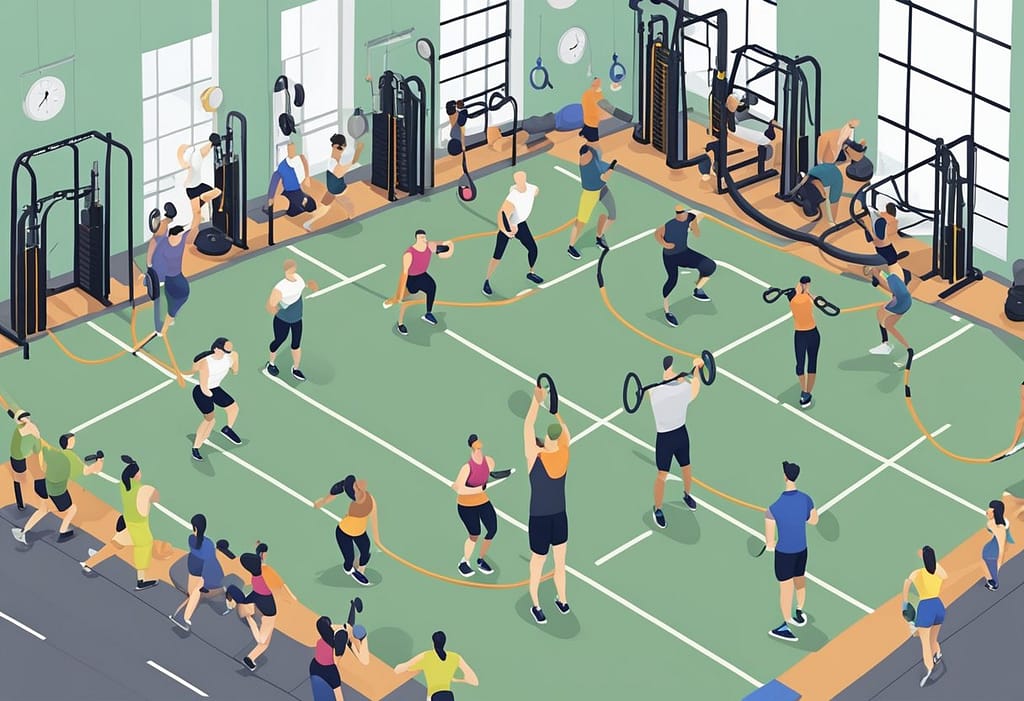
When it comes to HIIT workouts and exercises, there are a variety of options available to suit different fitness levels, preferences, and equipment availability. In this section, we will explore some core HIIT exercises, how to modify HIIT for different fitness levels, and considerations for equipment and space.
Core HIIT Exercises
Some of the most popular HIIT exercises include sprints, burpees, squats, jumping rope, and bodyweight work such as push-ups, lunges, and planks. These exercises can be combined in various ways to create a challenging and effective HIIT workout.
For example, a simple HIIT workout could involve alternating between 30 seconds of sprints and 30 seconds of rest for a total of 10 rounds. Another option could be to perform 20 seconds of burpees, followed by 10 seconds of rest, repeated for 8 rounds.
HIIT for Different Fitness Levels
One of the great things about HIIT is that it can be modified to suit different fitness levels. Beginners can start with shorter work intervals and longer rest intervals, gradually increasing the intensity as they become fitter.
For those with more experience, HIIT can be made more challenging by increasing the work interval duration, decreasing the rest interval duration, or incorporating equipment such as dumbbells or resistance bands.
Equipment and Space Considerations
HIIT can be performed with little to no equipment, making it a great option for those who prefer to workout at home or don’t have access to a gym. However, some exercises such as cycling, rowing, and treadmill sprints require specific equipment.
When it comes to space, HIIT can be performed in a small area such as a living room or backyard. However, exercises such as sprints and jumping rope require more space, so it’s important to ensure you have enough room to perform these exercises safely.
Overall, HIIT workouts and exercises offer a challenging and effective way to improve fitness and burn calories. By incorporating a variety of exercises and modifying the intensity to suit different fitness levels, anyone can benefit from this type of training.
Benefits and Risks of HIIT
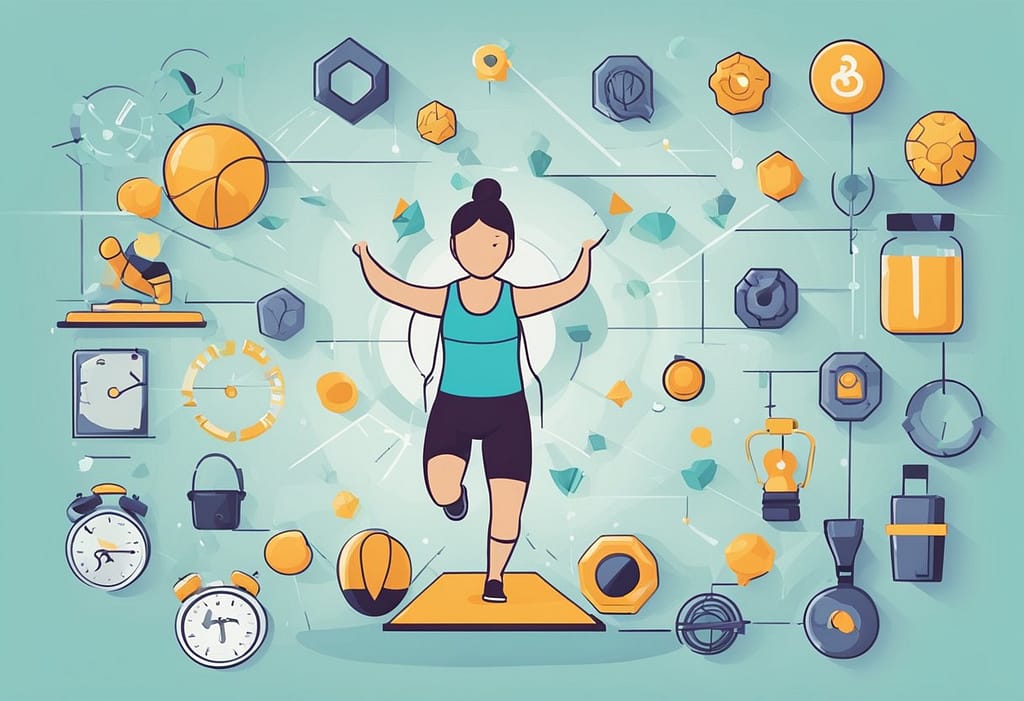
Health and Fitness Benefits
High Intensity Interval Training (HIIT) has various health and fitness benefits. It can help improve cardiovascular health by lowering blood pressure and reducing the risk of heart disease. It can also improve metabolic rate and blood sugar levels, which can be beneficial for individuals with diabetes or obesity. HIIT has also been shown to increase muscle mass and improve overall physical performance.
Weight Loss and Metabolic Effects
HIIT is an effective tool for weight loss and fat loss. It can help increase metabolic rate, which can lead to continued calorie burn even after the workout is complete. HIIT can also improve insulin sensitivity, which can aid in weight loss and reduce the risk of developing type 2 diabetes.
Potential Risks and How to Avoid Them
While HIIT has many benefits, it is important to be aware of potential risks. Overtraining can lead to injury and burnout, so it is important to pace yourself and listen to your body. Sprains and other injuries can also occur if proper form is not maintained during exercises. It is important to warm up properly and use correct form to avoid injury.
In conclusion, HIIT is a highly effective and efficient form of exercise with numerous health and fitness benefits. However, it is important to be aware of potential risks and take steps to avoid them. By incorporating HIIT into a well-rounded fitness routine, we can improve our overall health and physical performance.
HIIT Training Protocols
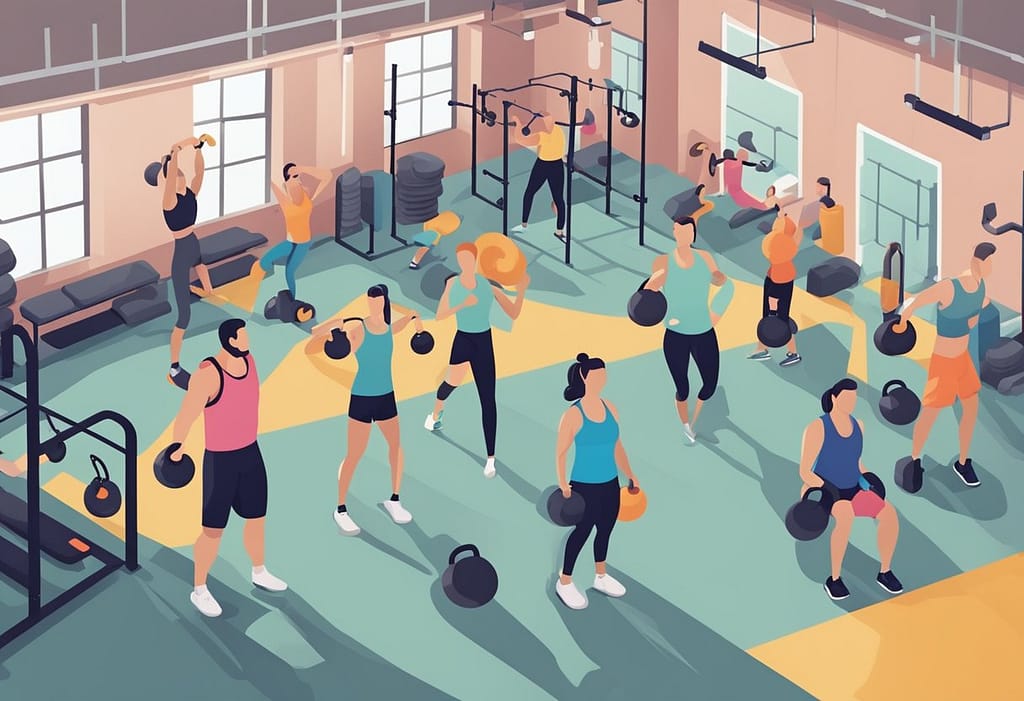
High Intensity Interval Training (HIIT) is a popular and effective training method that involves short bursts of intense exercise followed by periods of rest or low-intensity exercise. There are several different HIIT protocols that can be used to achieve various fitness goals. In this section, we will explore some of the most popular HIIT training protocols.
Tabata Protocol
The Tabata Protocol was developed by Dr. Izumi Tabata and his team at the National Institute of Fitness and Sports in Tokyo, Japan. This protocol involves performing 20 seconds of high-intensity exercise followed by 10 seconds of rest, repeated for a total of 8 rounds (4 minutes). This protocol has been shown to improve both aerobic and anaerobic fitness in a short amount of time.
Gibala Regimen
The Gibala Regimen was developed by Dr. Martin Gibala and his team at McMaster University in Canada. This protocol involves performing 60 seconds of high-intensity exercise followed by 75 seconds of rest, repeated for a total of 8-12 rounds (20 minutes). This protocol has been shown to be an effective way to improve cardiovascular fitness and metabolic health.
Timmons Regimen
The Timmons Regimen was developed by Dr. James Timmons and his team at Heriot-Watt University in Scotland. This protocol involves performing 20 seconds of high-intensity exercise followed by 2 minutes of rest, repeated for a total of 3 rounds (10 minutes). This protocol has been shown to be an effective way to improve both aerobic and anaerobic fitness.
When designing a HIIT program, it is important to consider factors such as the duration, time, speed, work to rest ratio, and type of exercise used. The American College of Sports Medicine recommends that individuals perform HIIT workouts for a total of 20-60 minutes per session, including warm-up and cool-down periods. The work to rest ratio should be tailored to the individual’s fitness level and goals, with more advanced individuals using shorter rest periods and longer work periods.
In conclusion, HIIT is a versatile and effective training method that can be tailored to meet a variety of fitness goals. By incorporating one or more of these HIIT protocols into your workout routine, you can improve your cardiovascular fitness, metabolic health, and overall fitness level.
Integrating HIIT into Your Routine
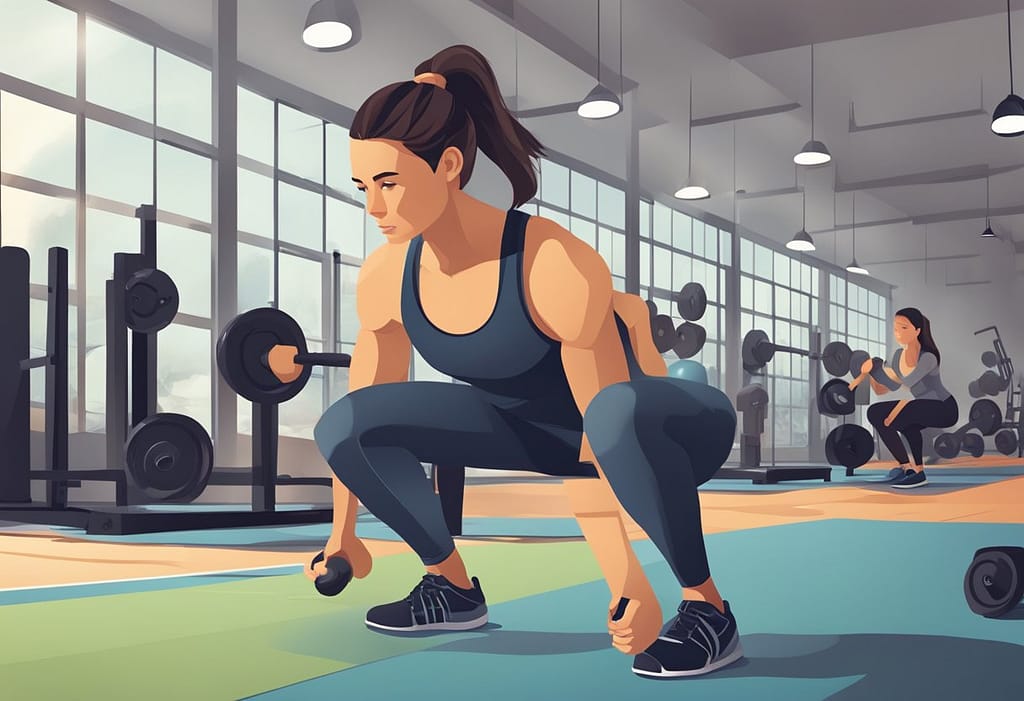
When it comes to integrating High-Intensity Interval Training (HIIT) into your routine, there are a few important factors to consider. By following some simple guidelines, we can achieve the best results from our workouts and avoid injury.
Creating a Balanced Workout Schedule
To reap the full benefits of HIIT, it’s important to create a balanced workout schedule that includes a variety of exercises. This will help to prevent overuse injuries and ensure that we are working all of our muscle groups.
We recommend incorporating a mix of strength training, cardiovascular exercise, and HIIT into your routine. This will help to improve exercise tolerance and overall fitness levels.
Recovery and Active Rest
Rest and recovery are just as important as the workout itself. We should aim to have at least one active recovery day each week, where we engage in low-impact activities such as yoga or stretching.
It’s also important to listen to our bodies and take rest days when needed. This will help to prevent injury and improve our overall health.
Tracking Progress and Adjusting Intensity
Tracking our progress is crucial to achieving our fitness goals. We recommend keeping a workout journal to track our progress and adjust our intensity as needed.
By gradually increasing our work-to-rest ratio, we can improve our fitness levels and achieve better results. It’s also important to understand the concept of EPOC (Excess Post-Exercise Oxygen Consumption) and how it can impact our workouts.
Overall, integrating HIIT into our routine can be a great way to improve our fitness levels and achieve better results. By following these simple guidelines, we can ensure that we are working out safely and effectively.
Frequently Asked Questions
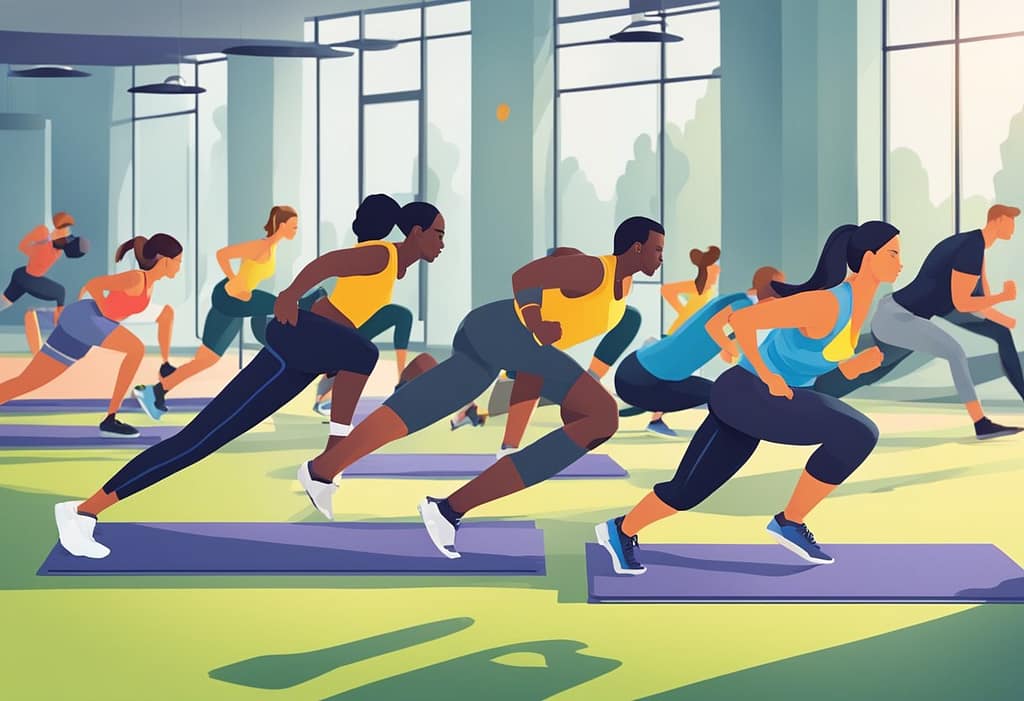
How often should one perform HIIT workouts for optimal benefits?
For optimal benefits, we recommend performing HIIT workouts 2-3 times per week. It is important to allow for adequate rest and recovery time between sessions to prevent overtraining and injury.
What are the potential drawbacks of engaging in HIIT regularly?
While HIIT can provide numerous health benefits, engaging in it regularly can also lead to overtraining, which can cause injury and burnout. It is important to listen to your body and adjust your workout routine as needed.
Can you provide examples of exercises that qualify as high-intensity?
Examples of high-intensity exercises include sprinting, burpees, jumping jacks, jumping rope, and mountain climbers. These exercises involve short bursts of intense activity followed by periods of rest or lower-intensity activity.
How does HIIT fit into a bodybuilding training regimen?
HIIT can be a beneficial addition to a bodybuilding training regimen as it can help improve cardiovascular endurance, burn fat, and increase metabolic rate. However, it is important to balance HIIT with weightlifting and other resistance training exercises to achieve a well-rounded workout routine.
Final Thoughts
And there we have it, the final whistle on our deep dive into the labyrinth of High-Intensity Interval Training. We’ve sprinted through the science, jogged past the jargon, and power-walked our way through the physiological playground that HIIT so masterfully exploits. If you’ve stuck with me this far, you’re either incredibly fit from all this metaphorical exercise or, more likely, you’re brimming with newfound insights that make the prospect of your next workout slightly less daunting and a whole lot more exciting.
As we cool down from this intellectual workout, let’s not forget to stretch our understanding and apply these insights to our daily routines. Remember, the beauty of HIIT lies in its versatility and adaptability, much like that favorite playlist that somehow suits every mood. Whether you’re a busy bee with only the buzz of a few spare minutes or a fitness fanatic looking for the next peak to conquer, High-Intensity Interval Training molds to your life, not the other way around.
Before we part ways and you eagerly don your workout gear, let’s take a moment to appreciate the journey we’ve been on. We’ve laughed in the face of lactic acid, winked at the wondrous work of mitochondria, and even flirted with the fine line between vigor and vitality. High-Intensity Interval Training isn’t just about the sweat; it’s about the sweet satisfaction of knowing you’re doing something scientifically sound for your body and mind.
As you step away from this screen and into the realm where heart rates soar and endorphins flood, carry with you the knowledge that HIIT is more than a series of intense bursts of effort; it’s a testament to the incredible adaptability and resilience of the human body. So go forth, dear reader, armed with science, humor, and a dash of bravado. Embrace the burn, chase the thrill of the timer, and always remember: in the grand HIIT scheme of things, it’s not just about how fast you move, but how smartly you rest and recover.
Thank you for joining me on this exhilarating expedition through the peaks and valleys of High-Intensity Interval Training. May your intervals be intense, your recoveries complete, and your fitness journey ever evolving. Until our next fitness foray, keep your squats low and your standards high!







